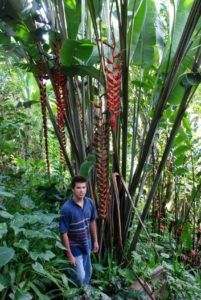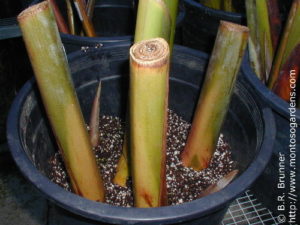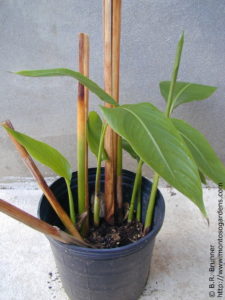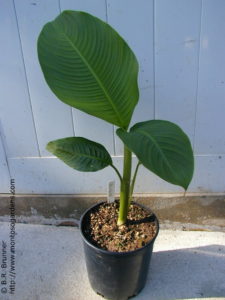Rhizome Establishment
In nature, heliconias grow on mountain slopes in tropical rainforests, where they have abundant moisture but perfect drainage. In the garden, they should be planted in a good soil with abundant organic matter and excellent drainage. A heavy, poor soil can be improved by the addition of river sand or perlite to increase aeration and drainage, and by incorporating compost or peat moss to increase organic matter content.

Most heliconias prefer shade or partial shade, and should be planted near large trees or palms, or near a building or other structure, where they receive partial shade, or direct sun only in the early morning or late afternoon. Rhizomes should not be planted too deeply; only the roots and the base of the plant should be covered with 2-3 inches (5-8 cm) of soil. They should be kept moist, but never waterlogged, at all times.

Whether they are planted in the ground or in a pot, rhizomes should not be disturbed, as the new roots and shoots that develop at the base are fragile. It is normal for the old stem to wither and die, and a new shoot will emerge from the base of the rhizome. This process may take several weeks to several months.

Plant Care
Heliconias contain a lot of water, and once established, are somewhat drought tolerant, although growth will be slower under dry conditions. A recently established plant should be watered well once or twice a week if it is not raining regularly. Once the plant begins active growth, it can be fertilized every 3-4 months, although fertilization may not be necessary in a fertile soil with abundant organic matter. Fertilizers may be water soluble, granular, slow release or organic, but should be used in moderation.

Heliconias are quite resistant to insects and diseases, especially if they are growing in a well drained soil with adequate moisture and available nutrients. The only maintenance required to maintain a heliconia clump in good condition is to cut and remove old stems at their base after flowering. This may be done with a small machete or hand pruner. Only old stems should be removed, as the newly emerging shoots will be the next ones to produce flowers. The old stems and leaves may be cut up and spread out as mulch around the base of the plant.
